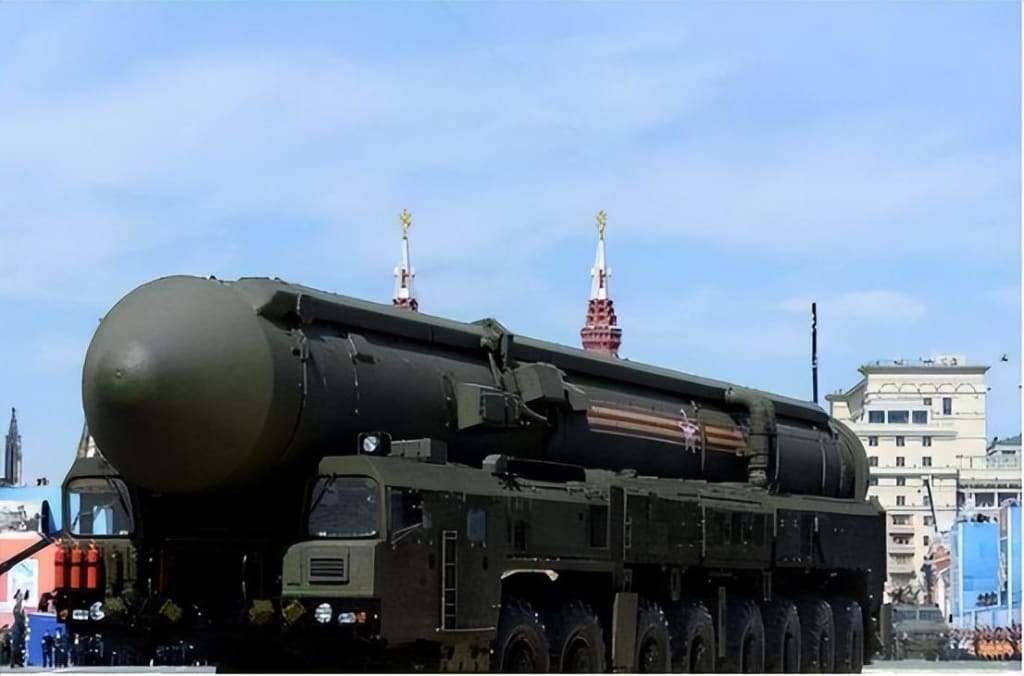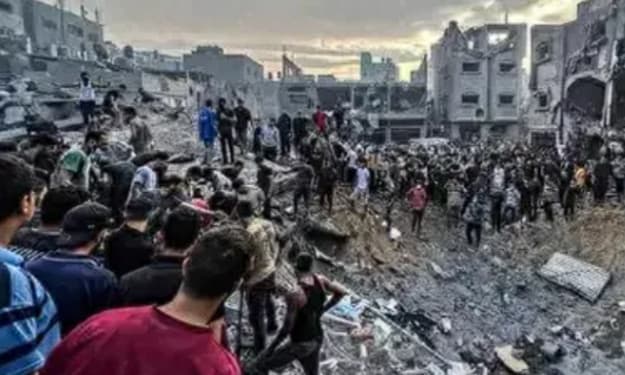If a nuclear war were to break out, there are six places in China where people could potentially seek refuge. Here are some essential pieces of knowledge that ordinary citizens must understand:
ahong

Nuclear weapons have been with us for 80 years since their development. In the 1960s and 1970s, the world was once overshadowed by the threat of nuclear war.
As the two poles of the world at that time, the United States and the Soviet Union each possessed over 10,000 nuclear warheads, enough to destroy the world dozens of times.
However, to this day, the only country that has been bombed by nuclear weapons is Japan.
But in fact, China was also once under the shadow of nuclear war.
In the 1960s, after the Battle of Damansky Island, Sino-Soviet relations deteriorated. The Soviet Union stationed millions of troops on the Sino-Soviet border and even threatened to carry out surgical nuclear strikes against China.
On that occasion, the great man with a far-sighted vision adopted a "home exchange" tactic. If China was subjected to a Soviet nuclear attack, it would immediately launch all its nuclear bombs at the United States mainland, especially Hawaii, while all residents would rush into Soviet territory and occupy it.
This plan successfully deterred the Soviet Union, but the possibility of nuclear war did not completely disappear.
If a nuclear attack really occurs in the future, where should ordinary people go to seek survival?
1. Air-raid shelters
In the 1960s, the relationship between China and the Soviet Union fell to an all-time low, and a major war could break out at any time due to a spark.
Due to the lack of long-range bombers at the time, China transformed the J-6 into the Q-5, which could carry a hydrogen bomb to drop on Soviet troops with a single round of fuel.
There were also the tragic nuclear explosion cavalry, wearing protective suits, carrying bombs, and riding horses to charge into the enemy camp.
It can be said that the military at that time had thought of every possible way, but never gave up.
The vast Chinese people were also not restrained by the Soviet Union. Under the precise leadership of the Party Central Committee, a large-scale digging of holes and accumulation of food began in China, and many factories were transferred underground.
It is said that to prevent nuclear explosion radiation, the underground air-raid shelters had a thick layer of concrete.
Now many of Beijing's subways are connected to the air-raid shelters of that time.
With the development of time, nuclear weapons have undergone many upgrades, evolving from the original atomic bombs to the third generation. Although the isolation effect of air-raid shelters has been somewhat weakened, they are still places where ordinary people may have a chance to survive.
2. Underground garages
Underground garages are a new type of civil air defense project that emerged with economic development.
The overall depth of the underground garage is not as deep as the air-raid shelter, but it bears the ground of the community, and its reinforced concrete structure strength is far higher than that of the air-raid shelter.
Moreover, underground garages generally have two thick iron doors of more than ten centimeters, which are enough to withstand high temperatures and nuclear radiation.
Usually, underground garages are connected to basements, which also have a thick layer of soil as a barrier, and people can certainly survive here.
However, it is not very likely to store food in the garage, and due to the connection with the outside world, most underground garages are dark and damp, which is not very friendly to those with joint problems.
For such a cold, damp, hungry, and thirsty place, it is really a love-hate relationship.
So, is there a place that can perfectly solve the shortcomings of underground garages and basements?
There really is.
3. Subway stations
The original intention of building subway stations was to facilitate the travel of the vast number of passengers.
Due to the inevitable occupation of the ground environment by buildings, the main roads of various cities are crowded, and the roads are even more congested during rush hours.
In this case, the operation of public transportation will be very difficult.
How difficult it is to take the bus during the morning and evening peak periods, I believe everyone who works must have a deep understanding.
So, is there such a tool that can avoid all the crowds?
After pondering, Westerners decided to build subways first.
After the founding of the People's Republic of China, the main cities in China have successively opened subways, and Beijing's subway has become one of the most complex subway lines in the world.
In addition to some areas in the outer ring using elevated bridges to connect to the subway, the main part of the subway in the urban area is deep underground.
The deepest place can reach dozens of meters underground, and these subway tunnels are extremely strong, even if they use penetrating bombs, it is difficult to break through, and the defense against nuclear bombs is naturally not in words.
It can be said that the subway is another form of air-raid shelter.
Moreover, in any subway, you can find convenience stores, fast-food restaurants, snack bars, toilets and other convenience facilities, which can solve the most basic material support for people's survival.
In other words, people hiding in the subway will be the most likely to survive under the threat of nuclear war.
However, no matter how good the project is, as long as it is a human hand, there will inevitably be places that are not considered. In front of the ghost axe of nature, human achievements seem insignificant.
I ask, no matter how large the spread of nuclear pollution, no matter how strong the traditional power is, can it penetrate the 100,000 mountains?
4. Sichuan Basin
Sichuan has been known as the land of abundance since ancient times, with a very low-lying terrain, surrounded by thick mountains.
But just such a piece of land that can be called a cage has very flat and vast farmland, rich water resources, underground coal, oil, natural gas, and 100,000 mountains provide endless wood and wild animals.
In other words, under extreme conditions, the Sichuan Basin can even operate independently without relying on the mainland.
During the period of Sino-Soviet hostility in the last century, Sichuan was the chosen place to deal with the Soviet nuclear war.
It is said that if a nuclear war occurs, the Party Central Committee will plan to gradually move into the Sichuan area to continue to command the subsequent battle.
This is the place chosen by the smartest group in China, gradually showing the superiority of the Sichuan Basin under the threat of nuclear war.
In addition, the terrain of Sichuan is special, and there is no important political center here, so it is almost not a bombing place.
Moreover, the mountains in the Sichuan area are closely arranged, and even if nuclear weapons are really dropped, they will quickly weaken due to the mountains. The mountain terrain is a restriction on economic development, but it is also an important guarantee for life safety.
In addition, there are many natural caves and caves in the mountains of Sichuan, which means that even if you are in the center of the nuclear protection, the local residents have space and places to transfer.
The defensive ability of these caves is even higher than the air-raid shelters dug by humans.
5. Qinghai-Tibet Plateau
In the previously published plans for the bombing of Chinese cities according to their importance, the possibility of nuclear bombing of the Qinghai-Tibet Plateau is relatively small.
Tibet is a strategic place for China, with high terrain and vast land, and most conventional weapons cannot operate in this area, making this area very suitable as the first choice for strategic retreat.
So why can Tibet become a place to seek a glimmer of hope for the same nuclear bombing?
Firstly, Tibet has a sparse population, which reduces the possibility of nuclear bombing.
Secondly, due to the high altitude of the Qinghai-Tibet Plateau, the cold wind makes this area quickly disperse the pollution even if it is subjected to nuclear bombing.
Finally, the Qinghai-Tibet Plateau has many mountains, just like the Sichuan Basin, which are the best defenses against nuclear pollution, and also make it difficult for the enemy to find high-value targets for bombing.
The Qinghai-Tibet Plateau also has many natural or artificially constructed caves, which can meet people's needs for survival and life when hiding and deterring.
If the country is really subjected to a nuclear attack, and the main political group and forces are forced to retreat to the Qinghai-Tibet Plateau, this place can also meet the hope of China's rise again.
In recent years, although China has been developing the western region, the utilization rate of natural resources in the Qinghai-Tibet Plateau is actually very low.
As a result, local natural resources, biological resources, and mineral resources are relatively primitive, giving them great development value.
So if you choose to come to the Qinghai-Tibet Plateau after the war, you can not only avoid nuclear weapons but also provide safety and material security for future life.
6. Vast Northwest
Although the northwest region is not as layered as the mountains, the western region has a vast land with a sparse population, and its own complete economic system and material system.
There are even artificially bred sea fish here.
So after the war, people come here, and they can quickly restore the economy, politics, and military in the unpolluted areas.
Due to the few cities in the Xinjiang region, and the large area of deserts, the above can ensure its survival in the nuclear bombing, retaining a large amount of clean land for post-war construction.
About the Creator
ahong
I'm Ahong, a writer painting China's stories for the world. Dive into tales that blend tradition with the contemporary, right from the heart of China.
Enjoyed the story? Support the Creator.
Subscribe for free to receive all their stories in your feed. You could also pledge your support or give them a one-off tip, letting them know you appreciate their work.






Comments
There are no comments for this story
Be the first to respond and start the conversation.